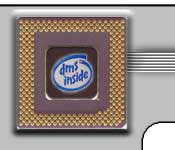|
Current-Mode System-on-chip for SPR Based Sensing Systems
Lisa E. Hansen and Denise Wilson

This paper presents a system-on-chip solution based on an array of programmable, current-mode integrated
circuits
for computing refractive index detected using a variable wavelength interrogation scheme in an SPR-based sensing
system. The system-on-chip solution is tested in the context of a highly portable sensing configuration
consisting of a fiber-based optical path and LED-based light source using a non-functionalized SPR probe. The
results are applicable to both functionalized (analyte-specific) and non-functionalized (bulk refractive index)
sensing systems. The effect of interferents (pH, temperature, and other background fluctuations) is minimized
using a current-mode compensation scheme that accounts for both systematic environmental influences and dark
current/fixed pattern noise in the photodetection stage. The output of the chip is an optimized single voltage
that represents the refractive index of the sensing environment. The single chip solution contains photodiodes,
a photodiode biasing scheme, current-mode dark current/fixed pattern noise compensation, programmable
current-mode background (reference) compensation, and an integration stage for weighting signals from multiple
wavelengths to compute a single voltage output. Experimental results, including the effects of electronic
noise, batch mismatch, and quantization error demonstrate a 6.8 X 10-4 resolution in refractive index units.
This resolution is comparable to that demonstrated in previous efforts for SPR-based signal processing using
purely software-based techniques (5 X 10-4 resolution), and fully integrated, pulse-weighted multiplication
approaches (3 X 10-3 resolution).
|



